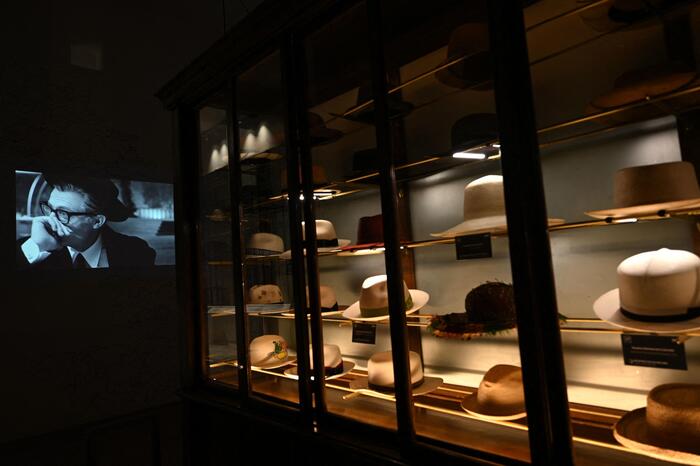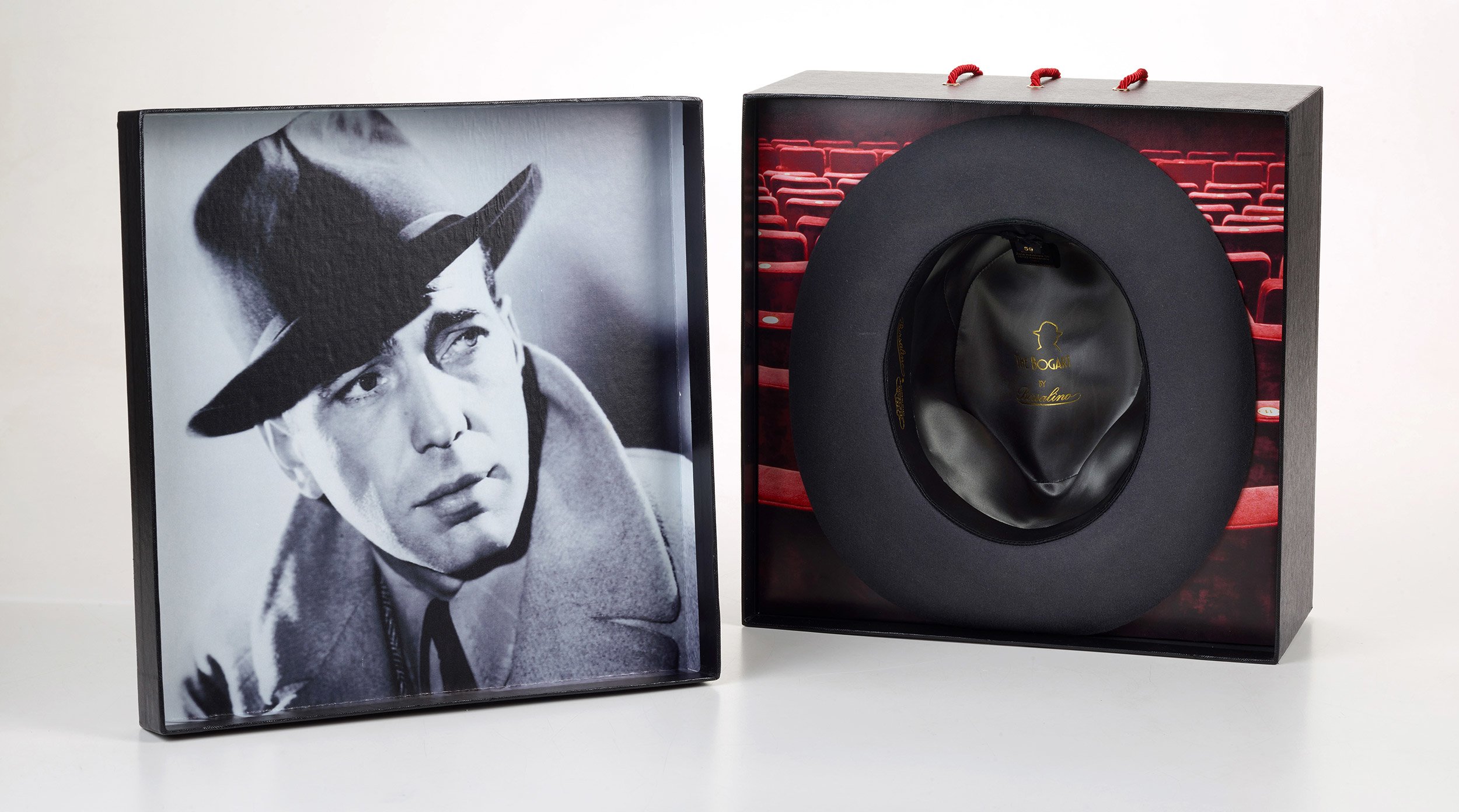Its legendary hats are the history of Italy. Founded in Alessandria at the dawn of the Italian Risorgimento as a craft workshop, Borsalino celebrates 166 years. From cinema, with which it has had a profound connection, to design and fashion, the brand of the elegant Fedora has influenced the style of entire generations, contributing to enrich Made in Italy offerings around the world.
Today, having weathered the storm of the 2017 bankruptcy, and with the birth of the new company the following year — acquired by Swiss entrepreneur Philippe Camperio’s Haeres Equita fund — Borsalino looks unquestionably young and vibrant. Credit also goes to the new creative director recently at the helm, the Milanese Jacopo Politi.
He arrived at Borsalino in April 2022 and made his position official last November. In late January, he debuted at Pitti Uomo in Florence with the Fall/Winter 2023 collection, “A Journey to Space.”

Born in 1978, a hat designer for 20 years, Jacopo trained at the Lombard capital’s fashion school, Istituto Marangoni. He is a veteran of the hat-making world and has long experience as director of style at Maison Michel, owned by Chanel, as well as years of collaboration with a large group of artistic directors from houses such as Fendi and Louis Vuitton.
With 3,500 pieces under his ownership, Politi is perhaps the largest collector of hats in Europe. Having grown up with the soft, more classic beanie model, he now loves the Brooklyn hat — wide-brimmed and slightly upturned on the sides.
We caught up with him via Zoom on the occasion of the inauguration of the new museum dedicated to the brand – desired by the city of Alessandria together with the Borsalino Foundation – to let him tell us about his work and the future of the brand he represents.
Is the hat an old love?
I would say that the hat fell on my head, by accident. My desire was to work in men’s prêt-à-porter, with a clear idea: to develop lines all my own, avoiding big brands.
A 360-degree turn.
Thanks to the International Lab Mittlemoda Award – an award for budding designers – I received a fair amount of job offers. A good opportunity to take my first steps. It was the 2000s, the hat was peeking out of the closet again, where it had ended up after ’68, so at the occasion, I turned to a small hat factory outside Milan. A couple of years later, the same workshop asked me for help with prototypes commissioned by Chanel. I accepted to do a favor for the two owners, who were my peers, but instead came up with “Le ballet russe”, my first hat collection.
How did it turn out?
I ended up in Paris. I presented the designs myself; they were a success. Between me and Virginie Viard – now artistic director of Chanel – it was love at first sight. The following year, I received requests for collaborations from big names, left and right.

You became fascinated by the hat, then.
What I find irresistible is its playful element. I also admit that it resembles me a lot. I rarely wear dark colors because I love vital ones, and a hat can complement unlimited shades. Then, the multiplicity of shapes, the adaptability, make it infinitely transformable. How can it not be inspiring?
You are a fashion connoisseur, someone who, in your own words, studies a lot, but also a pragmatist who deliberately chooses to be inspired by the street.
It may sound like a redundant, worn-out concept, but everything I encounter can be a suggestion, an idea. I have the ability to dwell on details that most people miss, so taking advantage of an endless mine like the street is a great blessing.
What future do you envision for Borsalino?
I will not make any revolution. Borsalino will continue to market classic hats, which make up 40 percent of the collection; my flair will do the rest.
Before arriving at Pitti Uomo and even before the role was made official, you spent a year locked in the brand’s archives.
I studied starting from this: what is Borsalino missing? How should it respond to fashion’s demands? So, the future began with two proposals: the bucket model – Noa – in the felt version, the main material of the house of Borsalino, and the baseball cap proposed in smocked cashmere, shaped entirely by hand. In pumpkin orange and emerald-green color tones, it will be a cult object.
What are the challenges for the future?
The environmental issue, ethical answers, women’s collections. The felt, which we know is composed of animal fur, is worked with material taken from the so-called supply chain, that would be trashed, so we can rightfully claim that no animal has been mistreated. Meanwhile, Borsalino will expand the use of wool felt. The women’s collections have been expanded, from three styles to as many as seventeen.
Now tell us why we must choose to wear a hat.
It is a statement, a choice so personal that it is the wearer’s calling card.

What do you suggest to visitors of the Borsalino Museum?
To take a good look at the archives. It is a walk-through that encapsulates the multifaceted nature of the brand. It is an enlightening itinerary that reconstructs the history of fashion and style through Borsalino’s boundless collaborations with great designers — from Gianni Versace and Krizia to Joji Yamamoto — but it also tells about popes and the army. Plus, fedoras lent to movie cults, from Humphrey Bogart in the film Casablanca to Marcello Mastroianni in Fellini’s 8 ½ to the recent Toni Servillo in La Grande Bellezza.
The last scene in the film Casablanca in which Humphrey Bogart wears a Borsalino has become iconic. Who today could be equated with the charming Humphrey Bogart?
The American actor Timothée Chalamet, someone who in appearance has nothing of Bogart. He has the gift of authenticity, however, a down-to-earth strength that fills him with charm.

What are you working on now?
On the women’s collection, which I am looking forward to presenting at the end of May. I started with the most classic of materials, Panama quality from Ecuador, with the idea of three-dimensionality. Then flaps, bangs with the focus on raffia and straw in plant fibers: wheat, grass, rice, cellulose, twine. The processing is made of meticulous steps, so that the hat is extremely light. Because if a hat for summer is an uncomfortable weight to wear, to the point of feeling the need to take it off, then it loses its functionality and is no longer valuable.
Jacopo, do you ever lay your hat on the bed?
Heaven forbid!












